|
|
Post by Arjan Hut on Jan 4, 2020 11:20:38 GMT -5
266 Records of Ruth Paine wiretap266 a Identity of Dallas T-4
See also:
48 The handwritten draft of the 'Comrade Kostin' letter to the Soviet Embassy196 The missing Mexico City transcript209 Diary and related papers of Mary MeyersErasing the Past...DiscussionsDuring a phone call placed at one pm November 22, 1963, Michael Paine calling from his office at Bell Helicopter to Ruth at home in Irving, this assumption receives a qualification: “the male voice was heard to comment that he felt sure LEE HARVEY OSWALD had killed the President, but did not feel OSWALD was responsible, and further stated, “We both know who is responsible.” Whoever it is Michael Paine believed “responsible” for the assassination it has remained closely held, as neither he or Ruth Paine have faced official scrutiny since 1968.  House of Paine in Irving House of Paine in IrvingThe initial report on this phone call was generated by Special Agent Lish on November 26, 1963. It summarizes an interview with Captain Paul Barger of the Irving Police Department, who had “received information that a male voice was overheard in a conversation,” during a telephone call held on “November 23”. Barger provided both the Arlington number from Michael Paine’s office, and the Paine’s residential number in Irving. “Captain BARGER advised that the male voice was heard to comment that he felt sure LEE HARVEY OSWALD had killed the President, but did not feel OSWALD was responsible, and further stated, “We both know who is responsible.” Barger does not identify the source of his information. (FBI 105-82555 Oswald HQ File, Section 67, p. 51) 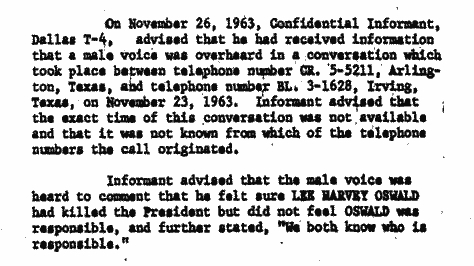 The Gemberling report specifying Confidential Informant Dallas T-4 was classified and not shared with the Warren Commission. It was declassified in 1976, and Bernard Fensterwald of the Committee to Investigate Assassinations determined that “confidential informant T-4 is almost undoubtedly a wiretap recording. The nomenclature is widely used by the FBI to indicate to their own agents the wiretap source of a piece of information without having to reveal the source to outsiders.” Fensterwald’s allegations were repeated by Congressmen Thomas Downing and Henry Gonzalez, who publicized the Paine’s “we know who is responsible” conversation on the House floor.  In a 1976 Dallas Times Herald article written to refute the allegations of a wiretap on the Paine’s residential line, Hugh Aynesworth interviewed Paul Barger, then working for the Irving Independent School District. Barger claimed the source of his original report was known to him after all, and was a telephone repairman who by chance, “due to some mechanical difficulties ... he was checking out the line” and inadvertently listened in on the conversation. Barger, supposedly, did not identify the man back in 1963 over concerns of reprimand. Barger added he “did not believe the FBI had any wiretap on the Paine house, ‘If they did,’ he said, ’they wouldn’t have been asking me for what happened.’” (FBI 62-109060 JFK HQ File, Section A28, p. 71-72). The phone call itself, and its content, are not denied. (...)  The call came from Michael Paines Arlington office number The call came from Michael Paines Arlington office numberPaul Barger’s 1976 story of a telephone repairman, as well as his initial stories of being so busy on the assassination weekend that he could not recall either the source of the information or when it arrived to him, do not seem credible in the absence of cross-examination. The January 7 Gemberling identification of Confidential Informant Dallas T-4 is probably not referring to Barger, since Barger had been identified by name in an FBI report from weeks earlier, and there was no confidential necessity to that interview. Barger’s handwritten note presented on January 17 is unconvincing, and was not pursued. The Warren Commission was apparently unaware that telephone records established the phone conversation in question occurred on November 22 instead of the following day. These unsatisfactory efforts suggest that the Paine telephone conversation was indeed captured through a wiretap on the Paine’s residential phone, that Paul Barger assisted in covering up the source of the information by fudging his recollection and attributing an incorrect date to the phone call in question, and that Gemberling revealed the true source (Dallas T-4) for internal FBI use. ( Jeff Carter, A new look at the enigma of the Backyard Photographs, Part 5)
|
|
|
|
Post by Arjan Hut on Jan 5, 2020 5:58:15 GMT -5
267 The source of Oswald's funds
If there is anything constant in Oswald’s life, it is his need of money. After three years on a marine private’s pay, he goes to Russia. There he works in a factory for the pittance of 80 rubles a month. He returns to America with a wife and child in mid-1962 and thenceforward works at a series of jobs paying the legal minimum wage or less — when he is not unemployed. For months his only acknowledged source of income is the Texas unemployment compensation of $33 a week. His job at the School Book Depository, from whose warehouse he is supposed to have shot the President and Governor Connally, paid him $1.25 an hour. 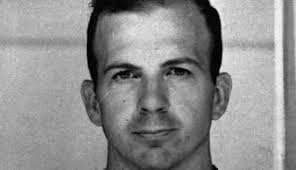 Surely he was a pauper, a fellow whose monetary resources could only keep him swinging between want and destitution. But if there is another thing about Lee Oswald as certain as his indigence, it is that he was often capable of expenditures that would have cramped the purse of a suburban status seeker. (...) Where did the money come from? The FBI and the Dallas police fail to supply information on the subject. For the Russian period, we have the unsupported assertion of Pravda that Oswald was an American spy who made numerous contacts with the American Embassy. This might indicate a CIA affiliation. He wrote his mother that, on his return, he would spend a day or so in New York and Washington for “sightseeing.” After that, all is dark except for one hint. An Associated Press dispatch of November 30 from Dallas says in part: “Someone telegraphed small amounts of money to Lee Harvey Oswald for several months before the assassination of President Kennedy, it was reported today,” the Dallas Times Herald said. The unidentified sender telegraphed Oswald $10 to $20 at a time. Here apparently are some of the Western Union items about which the FBI has been so secretive — but why this secrecy? If the money came from the Communist Party, it is hard to understand why the FBI should cooperate in a Bolshevik plot. If it came from a right-wing or Fascist source, the FBI could not lose much by revealing it. But if the money came from a government source, then the agency’s reticence is understandable. ( Harold Feldman, OSWALD and the FBI, The Nation, Januari 1964)
|
|
|
|
Post by Arjan Hut on Jan 6, 2020 14:11:49 GMT -5
268 An invisible writing assistant?
Compare:37 The identity of the person who returned Oswald's library book after the assassination48 The handwritten draft of the 'Comrade Kostin' letter to the Soviet Embassy154 One library card Until the authorship of the letters to FPCC is settled,
I think it reasonable to suppose that Oswald did not compose them,
at least not without help.
Erasing the Past...DiscussionsIf the FBI did not employ Oswald or work with him, then who wrote the letters he addressed to the Fair Play for Cuba Committee in New York? Oswald alone certainly didn’t. Whoever wrote the letters to New York was coherent, commanded a good vocabulary, rarely misspelled a word, and punctuated decently. Oswald himself wrote English that a sixth-grader would blush to acknowledge. Here is a letter he wrote to his mother from Russia on June 28, 1963. I preserve the original spelling and punctuation: Dear Mother.Recived your letter today in which you say you wish to pay me back the money you used last year, that,
of course, is not nessicary however you can send me somethings from there every now and than.If you decide to send a package please send the following:One can Rise shaving cream (one razor (Gillet)Pocket novels westerns and scienace fiction — Time or Newsweek magazineChewing Gum and chocolate bars.That’s about all. Ha-haI very much miss sometime to read you should try and get me the pocket novel “1984” by Wells.I am working at the local Radio plant as a mettal worker. We live only five minutes from there so it is very
conveinant. Well thats about all for now. I repeat you do not have to send me checks or money!Love XXLeeP.S. Marina sends a big Hello to you alsoNow compare this semi-literate effusion with the following addressed to the Fair Play for Cuba Committee about two years later. (A New York Times report on the letters to FPCC indicates that they were handwritten, so presumably no public stenographer improved their style.) Dear Mr. Lee:
I was glad to receive your advice concerning my try at starting a New Orleans F.P.C.C. chapter.
I hope you won’t be too disapproving at my innovations but I do think they are necessary for this
area. As per your advice I have taken a P.O. Box (N.O. 30061).
Against your advice I have decided to take an office from the very beginning.
I u c [apparently meaning, as you see] from the circular I had jumped the gun on the charter
business but I don’t think it’s too important. You may think the circular is too provocative, but I want
it to attract attention even if it’s the attention of the lunatic fringe. I had 2,000 of them run off.
The major change in tactics you can see from the small membership blanks, in that I will charge $1 a
month dues for the new Orleans chapter only and I intend to issue N.O. F.P.C.C. membership cards
also.This is without recourse to the $5 annual F.P.C.C. membership fee.
However, you will lose nothing in the long run because I will forward $5 to the national F.P.C.C. for every
New Orleans chapter member who remains a dues paying member for 5 months in any year. . . .And so on for several more well-integrated paragraphs. He now spells “receive” and “necessary” correctly. He has mastered the apostrophe. His ideas cohere. He tackles words like “innovations,” “provocative,” “recourse,” “disapproving,” “approaching,” and “application” with success, something that would have been clearly beyond the powers of the voluntary exile in Minsk. Until the authorship of the letters to FPCC is settled, I think it reasonable to suppose that Oswald did not compose them, at least not without help. Who, and where, is the invisible scribe? No associate of his New Orleans period has been found, or even hinted at. If Oswald was employed by the FBI to operate in “Castro groups,” as the news report suggests, it is also reasonable to suppose that in the letters to FPCC his pen was guided by the FBI. ( Harold Feldman, OSWALD and the FBI, The Nation, Januari 1964) 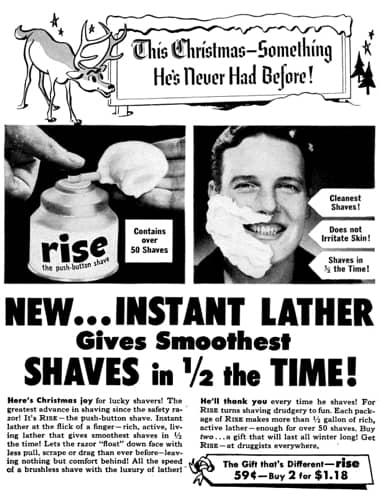 Oswald in the USSR requested Rise shaving cream Oswald in the USSR requested Rise shaving cream
|
|
|
|
Post by Arjan Hut on Jan 7, 2020 10:14:57 GMT -5
269 Norman Mailer & Lawrence Schiller's KGB files on Oswald
see also:
187 Portions of Anne Goodpasture's ARRB interview
"I whisper this, the (KGB) fulfilled that promise only in part, but the part
was enough to do the book."
(Norman Mailer) Erasing the Past...DiscussionsResearchers have always suspected that conversations within Oswald's apartment were monitored and recorded by the KGB. These suspicions were confirmed when Normal Mailer published a few of these conversations in his 1995 book, "Oswald's Tale," assuming the transcripts are genuine. But it was not until I met Ana Ziger, in 1998, that I realized Mailer had failed to find the answer to the most important question: What language were Oswald and Marina speaking? Where are the original KGB tapes? (John Armstrong, Harvey & Lee, p. 338) Soviet KGB records of Oswald’s time in Moscow and Minsk that were obtained by Norman Mailer are now in the possession of Mailer’s former associate Lawrence Schiller, who refused to turn them over to the ARRB. (Bill Kelly, ARRC.org) 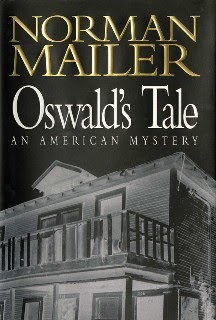 Much of the book features Warren Commission interview transcripts and abundant sections of written work by other authors (largely, Priscilla Johnson McMillan, interviewer of Oswald in Moscow in 1959 and Marina Oswald’s biographer and also, a known CIA dabble. (...) While investigation Lee Oswald’s Russian period, Mailer gets access to KGB transcripts taken from bugs that were placed in Oswald and Marina’s apartment. Ample sections of these are reproduced in the book. Basically, I found them not to add much light on Oswald’s character and it all amounts to a lot of bickering between a newly married couple. It’s essentially boring. However, one item stands out, and it’s another thing Mailer omits–and that is what language are they speaking in? ( Book Review: Oswald's Tale: An American Mystery by Norman Mailer) 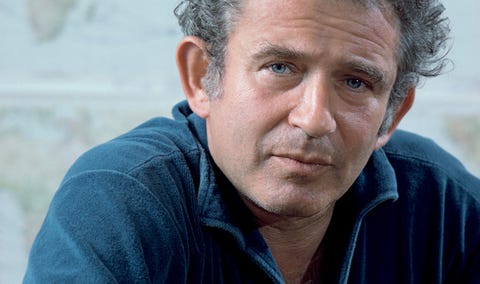 Norman Mailer Norman Mailer
The Fair Play for Cuba Committee (FPCC) was an activist group set up in New York City in April 1960. The FPCC's purpose was to provide grassroots support for the Cuban Revolution against attacks by the United States government, once Fidel Castro began openly admitting his commitment to Marxism and began the expropriation and nationalization of Cuban assets belonging to U.S. corporations. The FPCC opposed the Bay of Pigs invasion of 1961, the imposition of the United States embargo against Cuba, and was sympathetic to the Cuban view during the Cuban Missile Crisis of 1962. Subsidiary Fair Play for Cuba groups were set up throughout the United States and Canada. Among its twenty-nine early notable supporters were William Appleman Williams, Norman Mailer, Truman Capote, James Baldwin, Jean-Paul Sartre, Allen Ginsberg, Lawrence Ferlinghetti, Waldo Frank, Alan Sagner and Carleton Beals. The FPCC achieved notoriety through the activities of Lee Harvey Oswald in New Orleans. Oswald would later be accused of assassinating President John F. Kennedy. ( Wikipedia, retrieved 1-7-2020)  Lawrence Schiller Lawrence Schiller“I must confess that you thought it was my blue eyes that charmed the KGB into giving all those secret files to me, but in fact, I had a collaborator who did the interviews with me. The same Larry Schiller who worked on interviews with me when I was writing The Executioner’s Song. And he is one of the great wheeler-dealers of all time, and actually succeeded, since it was also the occasion of the breakup of Russian Communism, to get the new and uncertain KGB to enjoy the idea that they might consider giving me the Oswald file. I have to tell you that Larry can be utterly unscrupulous. So he went around telling everyone with whom we wanted to do interviews, I was the American Tolstoy, and they owed it to history to be interviewed by us. He also succeeded in getting Marina Oswald to sit down with us for a few days and talk, and when she read the book; her acerbic comment to Larry was ‘Tolstoy, he’s not.’ (...) And of course, the Oswald book began with his ability to get the KGB to promise their files to us. Later, I whisper this, they fulfilled that promise only in part, but the part was enough to do the book.” ( Norman Mailer in a letter to a friend) "Of course, something else is happening at Random House (...) Gerald Posner is
well into the writing of his Oswald book, Case Closed."Lawrence Schiller, born in Brooklyn in 1936, grew up in San Diego. After college he worked for Life magazine, Paris Match magazine, and the Saturday Evening Post as a photojournalist. He published his first book, LSD, in 1966. Since then he has published thirteen other books, including W. Eugene Smith’s Minamata and Norman Mailer’s Marilyn. He collaborated with James Willwerth on American Tragedy, Albert Goldman on Ladies and Gentleman, Lenny Bruce!, and with Mailer on The Executioner’s Song and Oswald’s Tale. The eleven motion pictures and miniseries he has directed for television include The Executioner’s Song and Peter the Great, which together won a total of five Emmys. (From Project Mailer) "Late ’91. So I go to Norman and talk to him about it. I tell him I believe if we spend enough time in the Soviet Union we can eventually get the files. I explain to him how I met with Bakatin and Ludmilla. I said I was pretty sure that Bakatin would not have told me that the files were divided if he had no intention of cooperating with me. Also, I told Norman, that there will be one immediate difficulty: most of the agents that dealt with Oswald had all retired years before. My plan, I say, is to find these agents and hire them. I lay out a plan for Norman. Then I go to see Jason Epstein, Mailer’s editor at Random House. I tell Jason what Norman has said, that he’d like to go there and investigate. I then tell Jason that I want Random House to cover all start-up expenses. That doesn’t seem to be a problem. I’m not saying he said, “Yes, $25,000 is not a problem.” But he is interested, especially since Norman wants to do the book. Of course, something else is happening at Random House, although at that time Jason doesn’t reveal it to us — for good reasons — Gerald Posner is well into the writing of his Oswald book, Case Closed [1993]. At roughly the same time, I do learn from Ludmilla, who has gone to Belarus for me, meeting with the assistant to the head of the Belarus KGB, that it appears we will eventually get access to the Oswald material. And also at about the same time, ABC Television puts out the word, obtained through some leak, that the Oswald files are there. That little story on ABC says to me that the files are obtainable. Of course, one of the assets and the liabilities of Larry Schiller is that I believe something is possible before I have the foundation to prove it. Then Random House gives us $25,000 for the trip. (...) Before we go [back to Russia], Norman and I have to make a decision about when we interview Marina Oswald. Do we do it before the trip or after? We come to an agreement that we’ll interview her after, because we will have then all the information we need about her and Oswald in Minsk, and won’t have to rely just on the published information. But I decide that we need a contract with Marina before we leave. Now, I have known Marina from the time of J.F.K.’s assassination, from when I had produced a film for ABC Television called The Trial of Lee Harvey Oswald. (...) So I go to Marina and I said, “We’re going make this movie, blah-blah-blah, and I know your right of privacy is important. I also know, Marina that someday you’re going have a big payday with your life story, and we don’t want to screw it up. If you have faith and trust in me, I’m prepared to offer you x dollars if you sign a simple letter that says you will never bring any legal action against Lawrence Schiller, or ABC, etc., for The Trial of Lee Harvey Oswald.” I paid her something like $25,000 and she wrote the letter exactly the way I wanted it. Now, that film came out; it was a pretty shitty film, but it didn’t hurt our relationship. My second wife, Stephanie, had become pretty good friends with Marina when she vacationed in California with her kids. Stephanie would go to the beach with her, go to Disneyland. (...) A working, trustful relationship with Marina was established. Before we went back to Russia and Belarus, I contacted Marina and went out to dinner with her. The short and long of it is that I negotiated an agreement with her, and paid her $15,000. For five days, Norman and I would have the right to interview her for so many hours a day, so many hours in the morning, so many in the afternoon." ( Long Legs, the American Tolstoy, Oswald and the KGB: A Conversation with Lawrence Schiller)
|
|
|
|
Post by Arjan Hut on Jan 8, 2020 3:17:43 GMT -5
270 "Robert Russell's JFK autopsy materials"Perhaps the most memorable silver bullet is detailed in the first chapter of Cyril Wecht's 1993 book, Cause of Death. In 1988 a man named Robert Russell got into contact with the eminent pathologist after seeing him discuss the JFK case with Dan Rather. He was a convict turned mob informant who was in a California prison. He began a long correspondence with Wecht and in 1990 sent him a letter in which he linked himself to Jimmy Hoffa. He wrote Wecht that he had access to evidence in the JFK case, namely the JFK autopsy materials: negatives, photos, x-rays, blood and tissue slides -- and also Kennedy's long lost brain. (Wecht, pgs. 48-50)  Wecht asked Russell for more details. Russell obliged by saying that in 1967 he met a woman who knew an associate of Jack Ruby's named Ralph Paul. The woman, whose name was Cindy, claimed that on the day of Kennedy's murder, she drove Paul to the parking lot behind the grassy knoll. Paul carried a violin case. When he returned to the car, they proceeded to an apartment where they met both Jack Ruby and a Secret Service agent. After the two others departed, Cindy looked inside the violin case and found a rifle, ten bullets, a map of the motorcade route, and a check for a hundred grand made out to Ruby. Cindy said she stashed the evidence in a container and drove to New Orleans, which is where Russell met her. While living with the woman, Russell discovered these items, which were hidden in a small room. Since it was RFK who had been hunting down Hoffa, Russell got in contact with him. Bobby told him to keep the evidence hidden and secret. Russell learned through RFK that Kennedy had taken the autopsy materials to a small church in upstate New York. Kennedy told the residing priest that if anything should happen to him he should call Russell and give the evidence to him. When RFK was killed in 1968, this is what happened. Wecht had reservations about this part of the story. As he writes, why would RFK "confide all this to a low-life snitch?" (p. 67) Sensing the impending doubt, Russell sent Wecht a home movie on VHS. Filmed in a swampland that looked like Louisiana or Florida, it showed Russell digging up one of the rifles used in the assassination that he had gotten from Cindy. At this point, and after Russell had asked for a loan, Wecht terminated the correspondence. But Russell got in contact with others in the JFK research community who were more easily convinced. One was Peter Lemkin. Lemkin talked to Wecht about Russell and asked him if he would at least examine the swampland rifles. Why? Because Lemkin actually paid the ex-convict a hundred thousand dollars for the two rifles. Wecht relates in his book (pgs. 68-69) how Lemkin sadly wrote to him in December of 1991: Russell had turned out to be a fraud and he had lost a fortune in the scam. When Wecht got in contact with Russell's parole officer, he said, "We traced the guns and found out he bought them from a pawnshop just last year..." Wecht concludes the Russell section of his book by saying that people like Russell are one reason the JFK case may never be solved: "They are true wackos who are not interested in truth or justice, but are greedy con men ... " who "muddy the waters". ( Jim DiEugenio, Beware: The Douglas/Janney/Simkin Silver Bullets, 2008)
|
|
|
|
Post by Arjan Hut on Jan 8, 2020 13:57:08 GMT -5
271. 40-minute filmed interview with George deMohrenschildt
related:136 George de Mohrenschildt's CIA affiliate personnel fileGallery, 4/78, ran Willem Oltmans new assertion that General Donald Donaldson, a Bulgarian émigré, claimed that J. Edgar Hoover, Allen Dulles and Richard Nixon conspired in the assassination. Oltmans interviewed George deMohrenschildt and his wife in 1967 for Dutch television station NOS, and CBS did the camera work. This 40-minute film mysteriously disappeared from NOS files in 1975. In 1977 a depressed de Mohrenschildt revealed that "he felt responsible for Oswald's role. He wanted to confess" but was receiving death threats. Recall that deMohrenschildt supposedly committed suïcide with a rifle just hours before a HSCA staffer, Gaeton Fonzi, was to interview. (Mal Hyman, Burying the lead, p. 277)  NOS building, Hilversum, The Netherlands NOS building, Hilversum, The NetherlandsIt is unclear if Oltmans knew of DeMohrenschildt's mental problems at the time he made his statements, but in later years, Jeanne told the newsman: ... If George's death was engineered, it is because you focused such attention on my husband that the real conspirators decided to eliminate him just in case George actually knew something, just like so many others involved in the assassination. (Jim Marrs, Crossfire)  Oltmans as DeMohrenschildt in JFK (1991) Oltmans as DeMohrenschildt in JFK (1991)While I thought this would be a quick read of rehashed material I was already familiar with, I was quite shocked to learn what I have through Oltman’s perspective. For starters, if you believe the New York Times or any of the mainstream media reports on Oltmans he was a money hungry third rate reporter who exaggerated and promoted deMohrenschildt as the svengali behind the assassination for his own profit, when in fact, as his papers reveal, he was a very thorough and respected Dutch journalist who had previously worked as a foreign correspondent in the Far East. He worked closely with his editors and NOS TV producers, and how he became entwined in the JFK assassination story is a story in itself. (Bill Kelly, Walking the Razor's Edge - The Dutchman and the Barron)
|
|
|
|
Post by Arjan Hut on Jan 9, 2020 4:37:25 GMT -5
272 Seventy plus hours of CBS outtakesSee also:32 Unseen Darnell footage 66 The original and complete Alyea film 98 Recordings of Malcolm Perry press conference 160 NBC interviews with Downtown Lincoln-Mercury salesmen197 Thomas Craven’s film sequence taken in Dealey Plaza 271. 40-minute filmed interview with George deMohrenschildt Erasing the Past...DiscussionsVariety magazine 10/25/78 interviewed CBS News President Richard Salant about the seventy plus hours of outtakes on the assassination. Salant stated that he had no intention of making them public, because nothing indicated that Oswald did not act alone. (Mal Hyman, Burying the lead, 279) 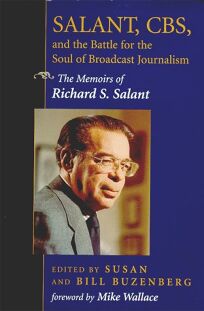 Richard S. Salant, "a lawyer, broadcast media executive, ardent defender of the First Amendment and Richard S. Salant, "a lawyer, broadcast media executive, ardent defender of the First Amendment and
passionate leader of broadcast ethics and news standards", served as president of CBS News from 1961
to 1964 and from 1966 to 1979. "If newsmen do not tell the truth as they see it because it might make waves, or if their bosses decide something should or should not be broadcast because of Washington or Main Street consequences, we have dishonored ourselves and we have lost the First Amendment by default." (Richard S. Salant, AZquotes)  The House Assasinations Committee did not ask the Columbia Broadcasting System to see controversial interviews filmed, but not aired, by CBS television 14 years ago with two witnesses in the President Kennedy assassination investigation according to a copyrighted report in the Washington Journalism Review. It says in its forthcoming issue that in CBS interviews with Lee Harvey Oswald's housekeeper," Earlene Roberts, "who saw him shortly after the assassination," and William Whaley, "the cab driver who is supposed to have driven Oswald to his boarding house after the shooting," what was reported by the Warren Commission. 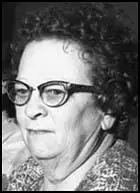 Earlene Roberts 1933-1966 Earlene Roberts 1933-1966
The magazine also alleges that CBS interviewers may have coaxed witnesses to conclusions in some 70 hours of interviews on film, but never used in the network's 1964 warren Commission report documentary. Although CBS has never publicly shown the interviews, WJR reports, film maker Emile de Antonio and Warren Commission Critic Mark Lane saw the films 14 years ago.  William Whaley 1905-1965 William Whaley 1905-1965"Both said then and both say now that the CBS interviewer led witnesses, some of whom, they claim, were saying things contrary to what the Warren Commission and the ensuing 1964 CBS documentary reported," WJR said in the report written by its editor, Florence Graves. The magazine quotes House Assassination Committee chief counsel G. Robert Blakey as saying that the film was not requested from CBS. "We sought no outtakes [film shot but not aired] from any news source because we were aware of the First Amendment principle involved." CBS and other broadcasters have long contended that outtakes, like a reporter's notes, should be considered privileged. De Antonio told WJR that the interview with the cab driver "contained statements which did not appear in the Warren report and which did not serve the report's conclusions." ( JFK Unit Reportedly Didn't Seek CBS Film, Washington Post, September 17, 1978 )
|
|
|
|
Post by Arjan Hut on Jan 11, 2020 13:27:02 GMT -5
273 Memorandum mentioned in Dr. Humes's testimony as being attached to President Kennedy's coat
See also:40 The original autopsy notes by Commander James J. Humes41 The first draft of the autopsy rapport by commander James J. Humes(The articles of clothing referred to were marked Commission Exhibits SOS. 393, 394 and 395 for identification, and received in evidence.) Mr. SPECTER. Taking 393 at the start, Doctor Humes, will you describe for the record what hole, if any, is observable in the back of that garment which would be at or about the spot you have described as being the point of entry on the President’s back or lower neck.  CE393 CE393
Commander Humes: Yes, sir. This exhibit is a grey suit coat stated to have been worn by the President on the day of his death. Situated to the right of the midline high in the back portion of the coat is a defect, one margin of which is semicircular. Situated above it just below the collar is an additional defect. It is our opinion that the lower of these defects corresponds essentially with the point of entrance of the missile at Point C on Exhibit 385. 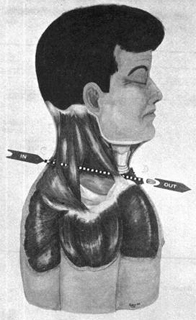 CE385 CE385
Mr. SPECTER. Would it be accurate to state that the hole which you have identified as being the point of entry is approximately 6 inches below the top of the collar, and 2 inches to the right of the middle seam of the coat? Commander Humes. That is approximately correct, sir. This defect, I might say, continues on through the material. Attached to this garment is the memorandum which states that one half of the area around the hole which was presented had been removed by experts, I believe, at the Federal Bureau of Investigation, and also that a control area was taken from under the collar, so it is my interpretation that this defect at the top of this garment is the control area taken by the Bureau, and that the reason the lower defect is not more circle or oval in outline is because a portion of that defect has been removed apparently for physical examinations. Mr. SPECTER. So, does the one which you have described as the entry of the bullet go all the way through? Commander Humes. Yes. sir ; it goes through both layers. ( Warren Commission, Volume II: Comdr. James J. Humes)
|
|
|
|
Post by Arjan Hut on Jan 12, 2020 10:01:11 GMT -5
274 One Baltimore ledger
Erasing the Past...DiscussionsA recently discovered FBI memorandum describes a letter from the U.S. Civil Service Commission, dated October 15, 1964, concerning one of it's investigators, Patrick F. Tallaro, who'd been conducting a neighborhood investigation at an apartment house at 915 Saint Paul Street in Baltimore.  915 Saint Paul Street, Baltimore 915 Saint Paul Street, Baltimore
The landlady informed Tallaro “that her housekeeper, Mrs. (Georgia) Ward, had seen Lee Harvey Oswald on television at the time of President Kennedy's assassination and recognized him as the man who had stayed in a room at their place for about two weeks in August 1963.” When the investigator then asked how she could be certain, “Mrs. Ward stated that she recognized Oswald so quickly because she had seen him frequently during the two week period, as he rarely left his room and seemed to have no particular activity or job … Both Mrs. Ward and Mrs. Tarsia (the landlady) stated that Oswald apparently used an alias instead of his own name. The investigator did not ask to examine the ledger for names listed in August 1963.” FBI files 100-10461-8453 (October 15, 1964) and 100-10461-8455 (October 29, 1964). (Dick Russell, On the trail of the JFK assassins, p. 226)
|
|
|
|
Post by Arjan Hut on Jan 13, 2020 4:09:01 GMT -5
275 "FBI memo on Oswald visit to Soviet embassy in Washington D.C." If the author, or someone out there, can produce this document,
I am certain it will be much appreciated by the research community.Most researchers by now are aware of Hoover’s communications to Lyndon Johnson and other information that has emanated from the Lopez Report, which has convinced most of us that Oswald was impersonated in Mexico City and that he quite possibly never even went there. But with this clue, the author makes an incredible claim: In another memo from hours after the assassination, Hoover dropped an even bigger bombshell: “Oswald has visited the Soviet Embassy in Washington D.C.” He repeats this claim on page 98. “And finally the coup de grace: It was learned in that an unsigned FBI memo was sent to new President Lyndon Johnson in the hours after the murder … One of those stunning facts was that Lee H. Oswald had visited the embassy in Washington D.C.” No timing, context or peripheral info about the purported meeting, nor anything around the document itself. Question: As was the claim in Mexico City, were the cameras pointed on the Washington embassy also malfunctioning?  JFK Suite at the Willard Hotel JFK Suite at the Willard Hotel
If ever a detailed footnote, or a full memo exhibit, or a link to a bombshell piece evidence was needed, this was it. But the author decided to leave out a cornerstone of his argument. He does not even print a full transcript. Out of the hundreds of points he tries to make in his book, this would have been the most important to cover in a serious, detailed fashion. Why had I not ever heard of this memo? I went into a mad scramble trying to find it—without success. I did find reports that spoke of Oswald making contact with the embassy by mail in 1962 to take care of issues pertaining to Marina; another report about a likely fake letter implicating Oswald and the Russians sent to the Russian embassy just a few days before the assassination. This letter was shown to be suspect by Russian representatives who correctly argued that it was the only typed letter Oswald ever sent them (Douglass, JFK and the Unspeakable, page 231). I had no luck confirming, or coming close to confirming, that Hoover had made such an explosive claim. So I tried networking. I got in contact with Larry Hancock, one of the top experts in documentary analysis in connection with this case and a writer of noted books on the assassination, communicated the following to me: Hi Paul, I’m afraid I can’t help you on the Soviet embassy visit; personally I would be very suspicious of such a document for a variety of reasons, including the fact that Hoover would have loved to tie Oswald to the Commies and actually asked LBJ to let him put something of that nature in the FBI report on the assassination. Johnson just ignored him. I think if he had a document as described we would have seen it … and there is nothing terribly suspicious about it given that Oswald had written them and was clearly trying to get Marina back into Russia (or at least give that impression, not sure how much she knew about his efforts).Forgive me for not taking this documentary clue for granted. If the author, or someone out there, can produce this document, I am certain it will be much appreciated by the research community. (Paul Bleau, " Paul Blake Smith, JFK and the Willard Hotel Plot")
|
|


























